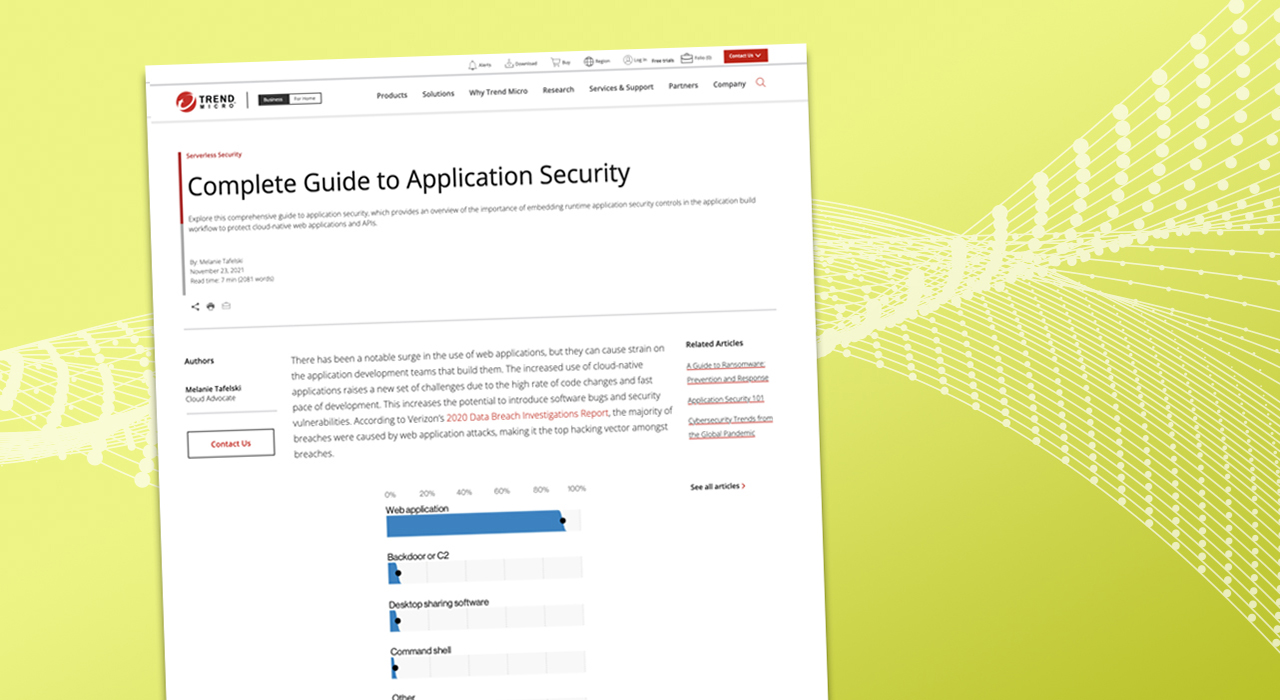- Forget AirTag: This Bluetooth tracker is my top pick for both iPhone and Android users
- This midrange robot vacuum cleans as well as some flagship models - and it's 50% off
- You may qualify for Apple's $95 million Siri settlement - how to file a claim today
- I changed 6 settings on my Roku TV to give it an instant performance boost
- Your Android devices are getting several upgrades for free - including a big one for Auto
A Complete Guide to Cloud-Native Application Security

However, these tools have downsides that may cause more challenges for DevOps teams:
SAST has difficulties scanning and reporting on cloud-native applications because static tools only see the application source code it can follow. As more cloud-native apps are now developed with libraries and third-party components, this generates failures in the tool processing these links.
DAST interactively testing the applications from the outside requires the application to be fully built upon every code change. As DAST requires the application to be fully built upon every code change, this prevents the application from fitting well into an agile CI/CD pipeline. It also only provides an external view of security, while forgoing what’s happening inside the application.
Both SAST and DAST are older technologies which provide less effective security for cloud-native applications and can impede on faster agile deployment strategies where DevOps teams require security tools to keep up with the pace of development.
IAST is an evolution to combine the benefits of both SAST and DAST with a developer-friendly approach. It is designed to work with development, testing, and/or QA environments to identify security vulnerabilities inside the application. In addition, it can be used in production environments to test traffic rapidly. This instant feedback can then be easily used to remediate via automation, or back to the developer, for code changes—typically actioned in the next application build.
There is an urgent need to implement modern security that will protect production applications from malicious and unforeseen threats in real time. Through deep instrumentation, application security must be able to detect weaknesses and vulnerabilities across today’s modern code streams—as well as platforms like APIs, containers, and serverless applications—without deploying numerous tools and relying on multiple skill sets.
Application security must also bring greater value to both security champions and application engineers by deploying security that can improve the pace of remediation and response. This allows organizations to monitor traffic and block attacks in real-time.
A New Type of Application Security is Needed: “RASP”
Gartner defines runtime application self-protection (RASP) as, “a security technology that is built or linked into an application or application runtime environment and is capable of controlling application execution and detecting and preventing real-time attacks”.
RASP provides a level of visibility and detection that network security controls cannot achieve by operating within the context of the application. Instead of monitoring the application for potentially malicious inputs, RASP only processes inputs that could change the behavior or operation of the application.
RASP has two modes:
- In detect mode, the software monitors calls to the application and sounds an alarm if a suspect call is made.
- In mitigate mode, RASP can prevent the execution of suspect instructions or terminate a user session.
This approach has the potential to increase accuracy without significantly impacting the performance of the application.
Benefits of RASP
- Security is provided anywhere you choose to place your application
- Embedded via code so doesn’t slow down development
- Offers real-time protection and insight at runtime
- Vulnerability coverage is comprehensive and automatic
- Works at scale and tailored for scaling applications
- Provides insight into the application behavior that perimeter security lacks
Introducing Trend Micro Cloud One™ – Application Security
Application Security is an evolution in protection, providing real-time application security-as-a-service. Delivered as part of its industry-leading Trend Micro Cloud One™ platform, Application Security provides code-level visibility and protection against the latest cyber threats from the inside. You can quickly and easily build protection into your application with just two lines of code, helping to minimize your risk and deliver greater visibility into the safety of your applications.
Application Security allows you to:
- Detect and block vulnerabilities and malware automatically at runtime
- Gain visibility into application threats with detailed forensics that investigate right down to the line of code
- Utilize protection that is difficult to evade or bypass
- Analyze the execution of the app
- Install IPS rules for vulnerabilities in web applications
- Use broad platform support to maintain your legacy applications and security for modern architectures. This including containers and serverless compute environments
- Use broad language support for traditional application designs, as well as cloud-native architectures
- Manage centralized visibility and control with Trend Micro Cloud One management
Application Security reduces the need for multiple application security tools across old and new platforms as well as coding languages. This security provides active guardrails and runs as a passive background process that doesn’t interfere with your release pipeline and schedule.
Once deployed, Applications Security notifies your security and operations teams according to pre-configured policies and provides them with highly accurate attack forensics to facilitate an effective response.
In addition, Application Security guards against determined attackers who are continuously running scanners against your application, creating malicious user accounts, fuzzing various elements, triggering exceptions, and attempting to run exploitation tools.
Trend Micro Cloud One Secures Your Applications at Runtime
By embedding Application Security in your applications, you will receive alerts as soon as attackers begin conducting scans and attacks. You won’t just be able to stop runtime attacks before they occur, but the capability for developers to pinpoint vulnerabilities in their code that the attack could exploit.

